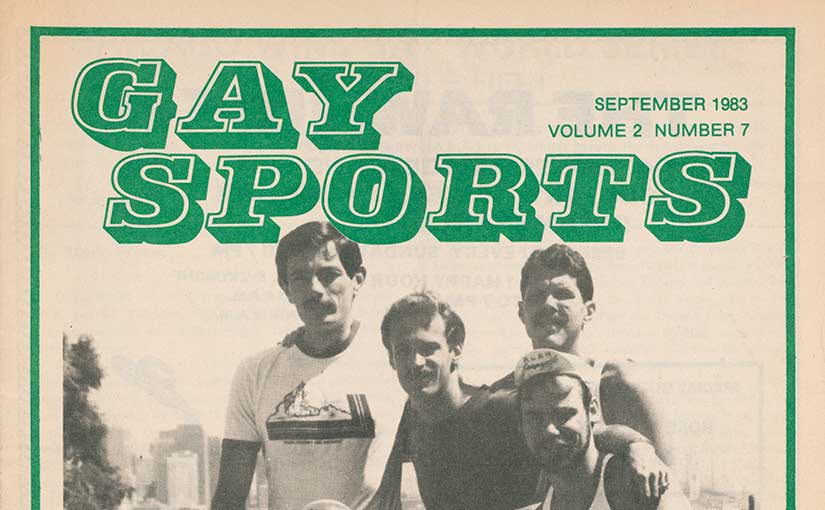by Greg Bond, Sports Archivist and Curator, Joyce Sports Research Collection
“Welcome to Gay Sports. As we all know—sports are an integral part of American society. This love of competition is as exciting to the Gay Community as it is to the Straight Community. In the months to come, this publication will bring you information about Gay men and women athletes competing in sporting events locally and nationally. Gay Sports is your publication. Keep us informed of what you are doing.”
—Gay Sports Nov. 1982 (vol. 1, no. 1), page 4.
Publisher Mark Brown’s introductory note in the inaugural 1982 issue of the San Francisco-based Gay Sports announced the purpose of the new publication to readers. The monthly publication—one of the earliest serials devoted to sports in the gay community—would cover national sports news, but the focus of the magazine was on publicizing and building community among gay and lesbian athletes and their allies. In honor of LGBTQ Pride Month, Rare Books & Special Collections (RBSC) highlights the recent acquisition of two issues (vol 1, no. 1 – November 1982; and vol 2, no. 7 – September 1983) of this scarce publication.
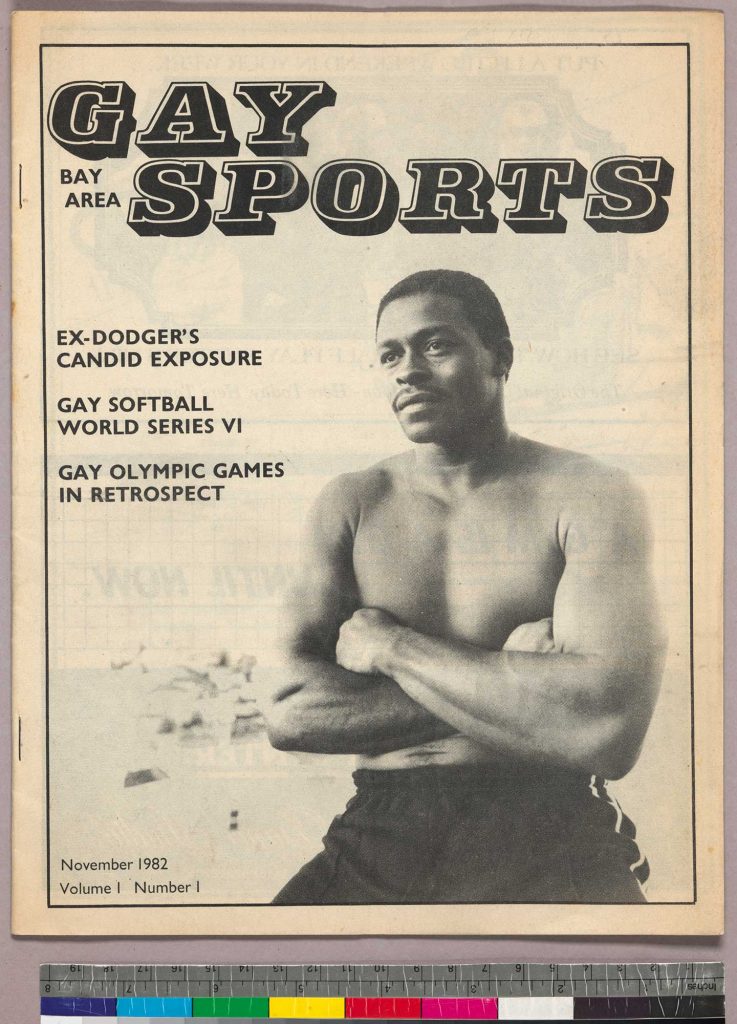
The cover story in the first issue of Gay Sports—then called Bay Area Gay Sports—was a feature by Duke Joyce (Nov. 1982, p. 5) about former major league baseball player Glenn Burke, who had recently publicly acknowledged that he was gay. Burke played for the Los Angeles Dodgers and the Oakland A’s from 1976 to 1979, but he had struggled with his identity as a gay man while playing professional baseball. As the article explains, he “endured subtle, yet cruel innuendos” and discrimination from management. In the end, he wanted to be “truthful to himself” and not lead a “double life,” so he retired from baseball.
Joyce wrote that “being a homosexual in any homophobic environment is agonizing enough, but in the revered Major League, it is damn near sacreligious,” and he observed that there would likely be no room for “Baseball, Hot Dogs, Apple Pie, and Queers” any time soon. He applauded Burke’s courage in going public and hoped that he had “managed to further erode the stereotypical image of gays.” In closing, Glenn Burke, himself, observed: “It’s your life, and nobody else is going to live it for you. You’ve got to have self respect.”
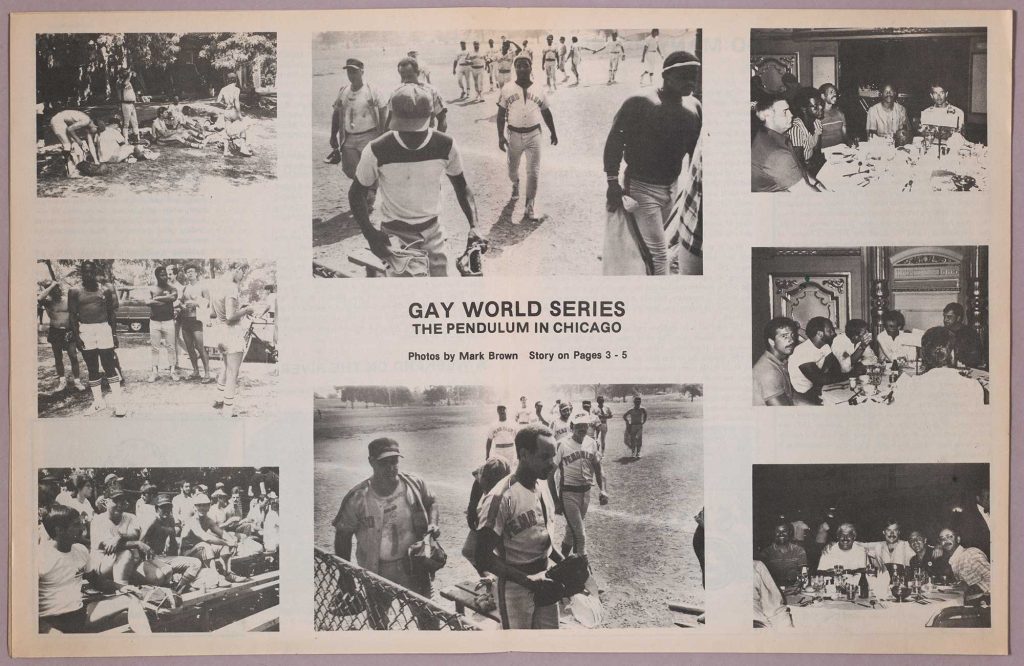
(Gay Sports September 1983, pp. 12-13)
Glenn Burke’s coming out was a prominent national news story, but most of the articles in Gay Sports focused on local and community-based sports leagues or competitions for gay athletes. The annual Gay World Series softball tournament routinely received lots of attention, as did the quadrennial Gay Games. (For more information about the Gay Games, please see also the Gay Games Collection, MSSP 10070, in RBSC or the recent digital exhibit “Papers Alight: Contextualizing Mike Curato’s Flamer“).
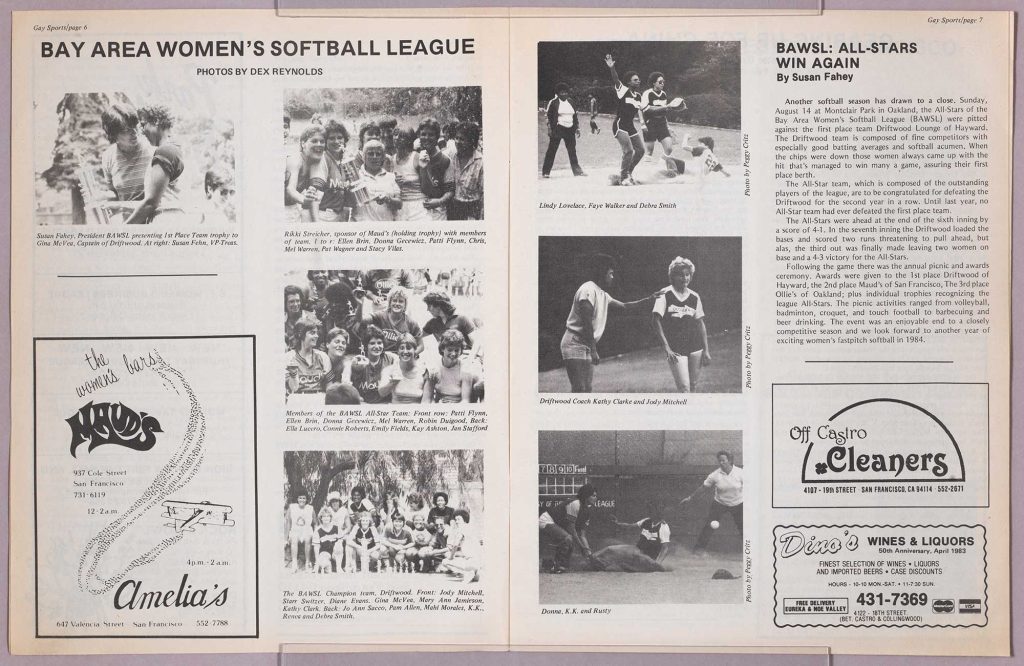
(Gay Sports September 1983, pp. 6-7)
Most articles focused on local leagues and organizations that helped build communities and networks of support for gay and lesbian athletes in the Bay Area or in other cities around the country. These two issues are replete with articles about local softball leagues, tennis tournaments, swimming competitions, hiking outings, bicycling groups, billiards leagues, bowling tournaments, flag football teams, and many other types of sports and athletics.
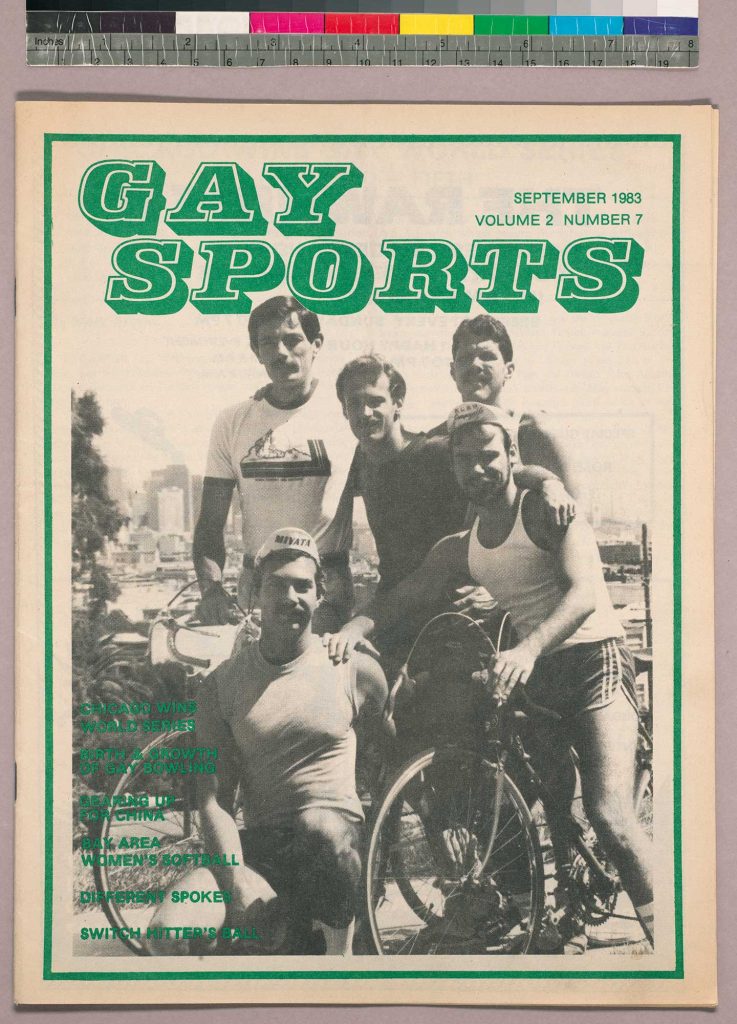
These sporting activities served a variety of roles and were an important part of many people’s lives. The organizer of an overseas bicycling trip described, for example, “the ease and comfort of traveling with an all gay group” (Sept. 1983, p. 8). The leader of a San Francisco cycling club noted the value in “informally representing a portion of the gay community to the bicycling world” (Sept. 1983, p. 10). But, for the most part, the various sports leagues were about safe spaces for friendship and community. The author of an article about bowling leagues simply wrote that competitors “come together not only to enjoy the sport, but also more importantly, to enjoy each other . . . . for therein lies the magic!” (Sept. 1983, p. 18).
These issues of Gay Sports are available to researchers. RBSC welcomes new donations of Gay Sports magazine to expand our holdings of this important title.
